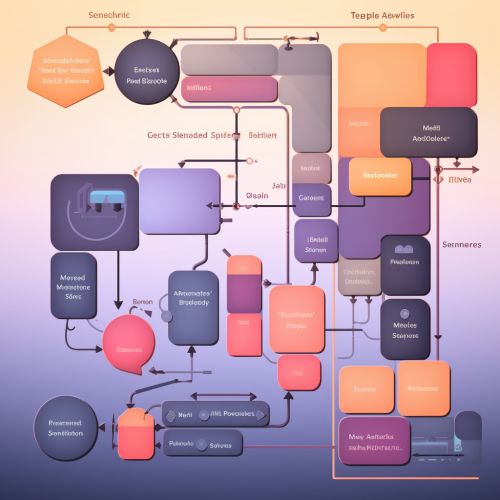Software design pattern
Overview
In the field of software engineering, a software design pattern is a general, reusable solution to a commonly occurring problem within a given context in software design. It is not a finished design that can be transformed directly into source or machine code. Rather, it is a description or template for how to solve a problem that can be used in many different situations. Design patterns can speed up the development process by providing tested, proven development paradigms.
History
The concept of design patterns has been an integral part of software engineering since the early days of the discipline. However, the formalization of the concept of design patterns in software engineering dates back to the late 1980s and early 1990s. The term was first used in this context by Christopher Alexander, an architect who noticed that many architectural design problems were often solved in similar ways. He identified and documented these solutions and called them "patterns".
Erich Gamma, Richard Helm, Ralph Johnson, and John Vlissides, collectively known as the Gang of Four (GoF), popularized the concept for the software field in their 1994 book Design Patterns: Elements of Reusable Object-Oriented Software. This book describes 23 design patterns and is often regarded as a central source of knowledge on the subject.
Types of Design Patterns
Design patterns can be classified into three categories: Creational, Structural, and Behavioral patterns.
Creational Patterns
Creational patterns deal with object creation mechanisms, trying to create objects in a manner suitable to the situation. The basic form of object creation could result in design problems or add complexity to the design. Creational design patterns solve this problem by somehow controlling this object creation. Examples of this kind of design patterns are Singleton, Builder, Prototype, Abstract Factory, and Factory Method.
Structural Patterns
Structural patterns explain how to assemble objects and classes into larger structures while keeping these structures flexible and efficient. They help ensure that when one part of a system changes, the entire structure does not need to change. Examples include the Adapter, Bridge, Composite, Decorator, Facade, Flyweight, and Proxy.
Behavioral Patterns
Behavioral patterns are concerned with algorithms and the assignment of responsibilities between objects. They describe not just patterns of objects or classes but also the patterns of communication between them. These patterns include Chain of Responsibility, Command, Interpreter, Iterator, Mediator, Memento, Observer, State, Strategy, Template Method, and Visitor.
Benefits of Design Patterns
Design patterns have several benefits. If correctly used, they can:
- Provide a way to solve issues related to software design using a proven solution.
- Speed up the development process by providing developers with a way to communicate using well-known, understood terminology.
- Improve code readability and reliability by making it more standardized and structured.
- Facilitate code maintenance by reducing the overall complexity of the code.
- Promote code reuse, reducing the size of the codebase and decreasing development time.
Limitations and Criticisms
While design patterns are useful for designing software, they have their limitations and criticisms. Some of these include:
- Design patterns do not lead to direct code reuse, as they just provide a template to solve a problem.
- They can lead to unnecessarily complicated designs if they are used in inappropriate situations.
- They can be difficult for novice programmers to grasp.
- Some critics argue that design patterns are just a sign of some shortcomings in the programming language. For example, many of the patterns in the GoF book are invisible or simpler in languages that have built-in support for higher-order functions.
Conclusion
Software design patterns are a valuable tool for software developers. They provide a shared language for software designers to express their ideas. Design patterns capture the static and dynamic structures of the designs that occur repeatedly in a particular design context and make them reusable. They provide a kind of design toolkit for software developers.
See Also


